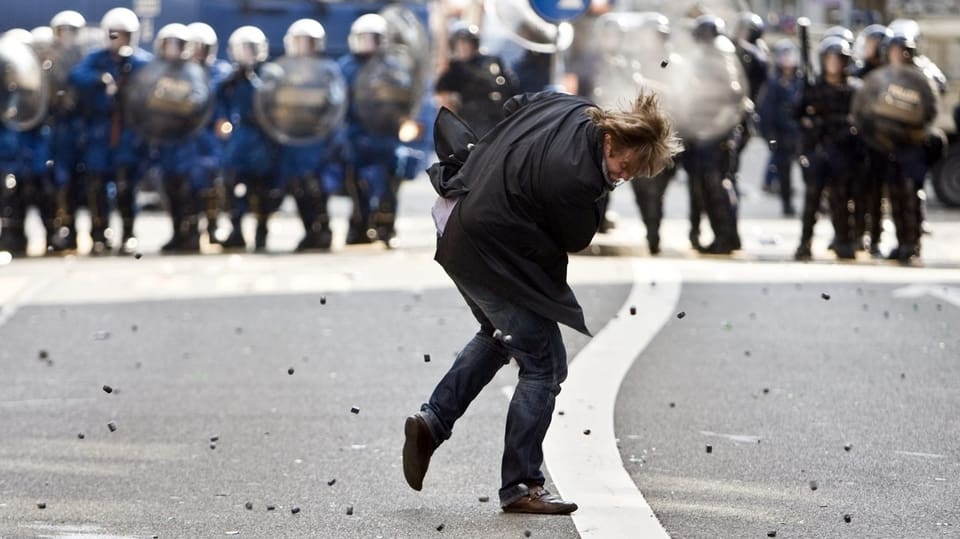Contents
Other countries already know it – now thousands of signatories are demanding a ban for Switzerland.
A Switzerland-wide ban on the use of rubber bullet weapons – that’s what a new petition is calling for. This was submitted to the Conference of Cantonal Justice and Police Directors (KKJPD) last Wednesday with over 6,400 signatures.
The originator of the petition is Iared Camponovo from the citizens’ movement Campex. “After a young man lost his eyesight in Zurich on May 1, I decided to finally do something about it,” says Camponovo.
The case in Zurich is not an isolated case. In a recently published article in a Swiss specialist journal for ophthalmology (Ophta), a Swiss ophthalmologist collected all publicly known Swiss cases in which people suffered eye injuries from rubber bullets. The doctor does not want to be named.
There have been 29 cases since 1980. In eleven of them, those affected were blind in one eye. According to the definition of the World Health Organization, blind means that the visual acuity of one eye is less than five percent. Most of those affected were young people who were active in a fan scene or took part in unauthorized demos. But sometimes bystanders were hit with rubber.
problem of scattering
The President of the Conference of Swiss Cantonal Police Commanders (KKPKS), Mark Burkhard, admits that the use of rubber bullets can cause injuries – even to bystanders. “If you use a weapon, you basically accept injuries.”
The police would only use the shotgun systems to create the necessary distance from the law enforcement agencies or to separate groups from each other during a violent demonstration, says Burkhard. There is a minimum deployment distance – between five and 20 meters, depending on the launcher system. In addition, the police forces are trained to aim at belt height.
Legend:
The projectiles spike up from the ground. (Pictured: May 1st demonstration in Zurich in 2009.)
KEYSTONE/Ennio Leanza
However, since the projectiles spread out in a cone when rubber shot is fired, it could happen that someone is hit in the head, says Burkhard. In addition, the police may stay below the recommended minimum distance if there is a situation of self-defence or self-defence assistance. As the “Republic” reported, this is the case relatively quickly.
If the minimum distance and thus the limit value is observed, the eye of the victim will not burst, according to the ophthalmologist. But a pure bruise is enough for an eye to go blind. “Every serious bruise is the beginning of a patient’s career,” says the ophthalmologist. “Sometimes you wrestle with many operations for the smallest residual vision.”
Police without rubber bullet?
But what if the rubber shot ban becomes a reality? It is of course politics that decides which means the police forces can use, says Burkhard.
The police always use the weakest possible but still successful means, says Burkhard. If they ran out of rubber shot, it would have to be done like in Germany, where “hundreds” take action against demonstrators. These are very large and expensive operations.
Water cannons with or without tear gas would also be suitable, but only under certain circumstances. Another possibility would be to shoot demonstrators with firearms, which Burkhard firmly rejects.

